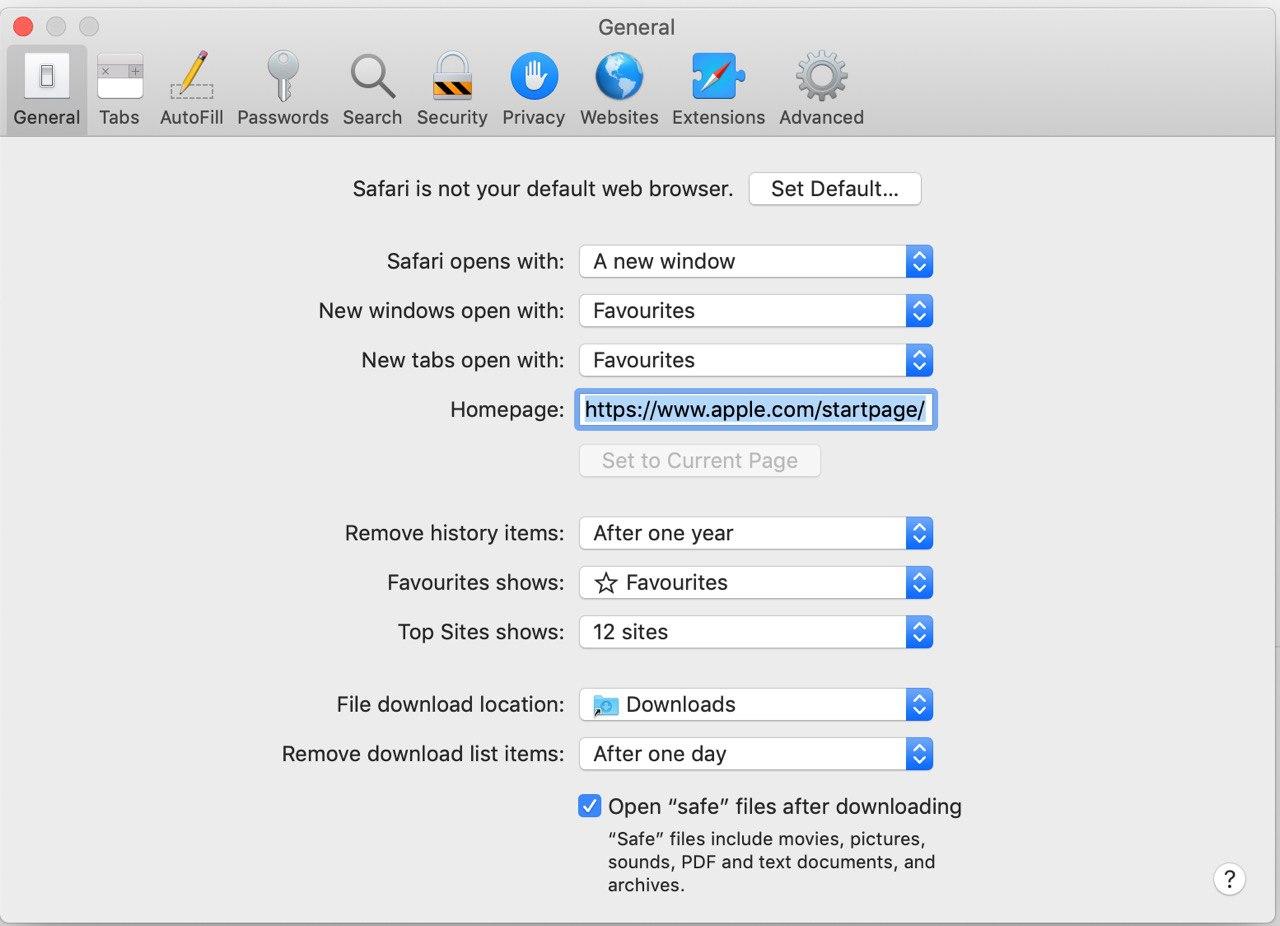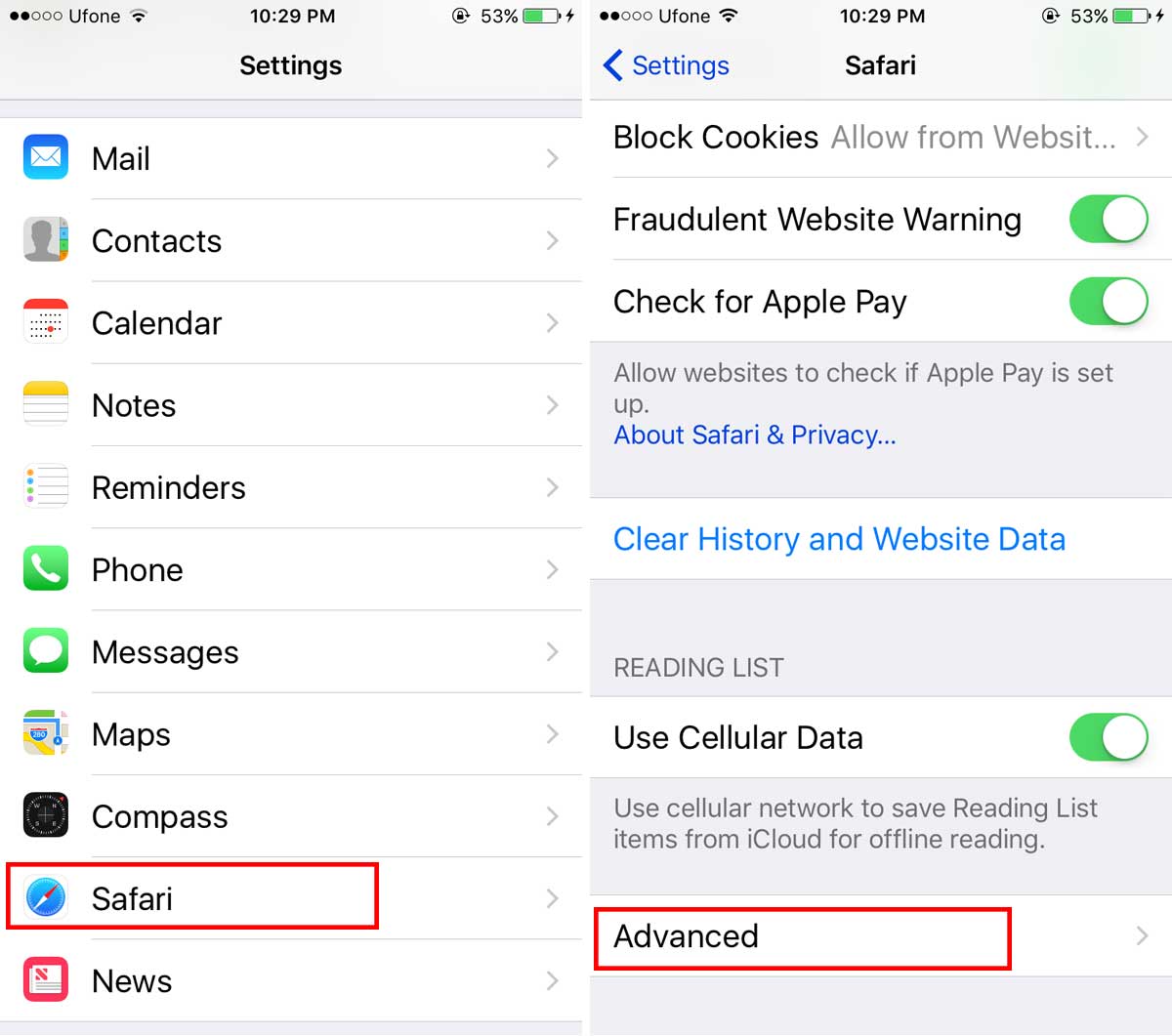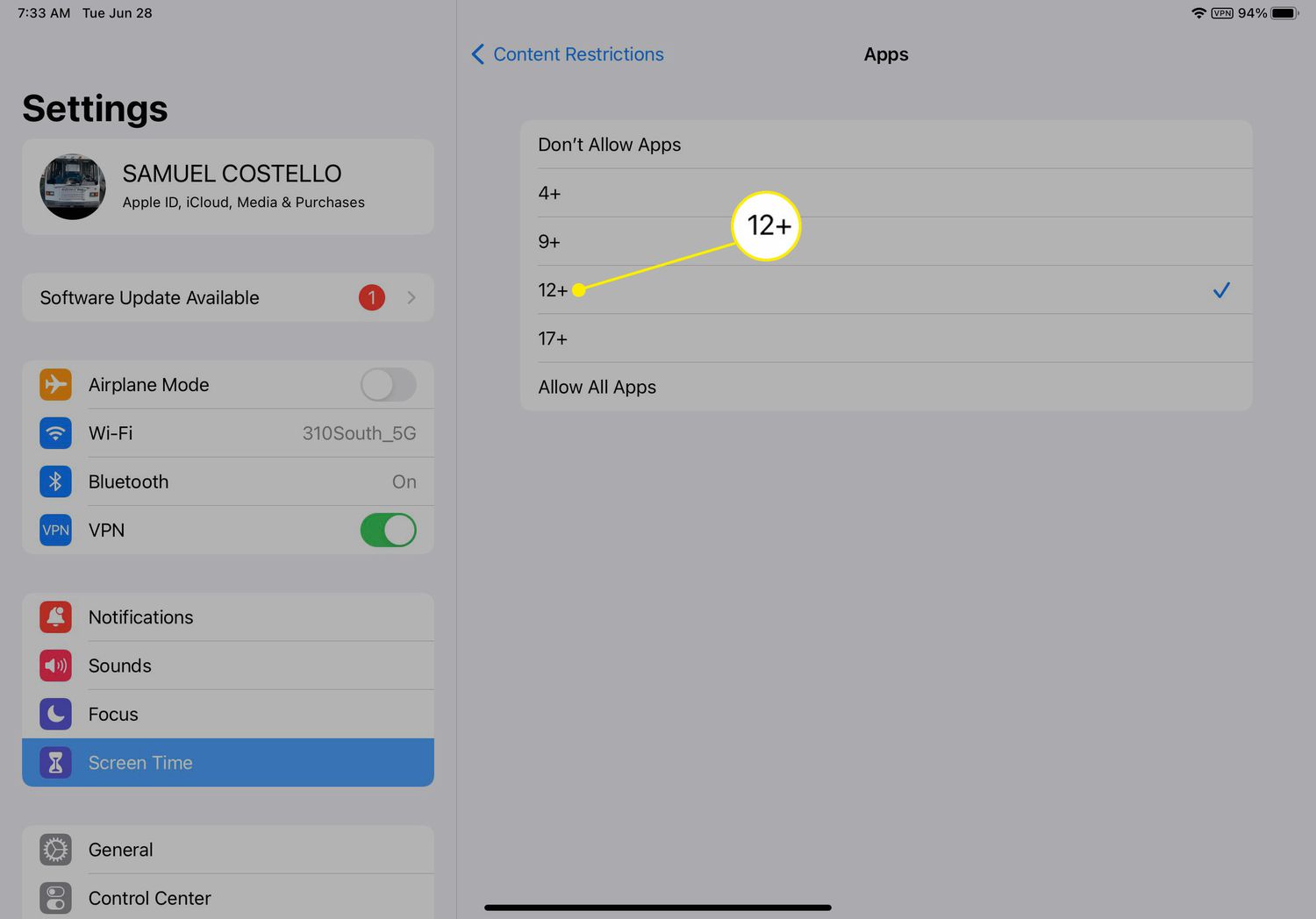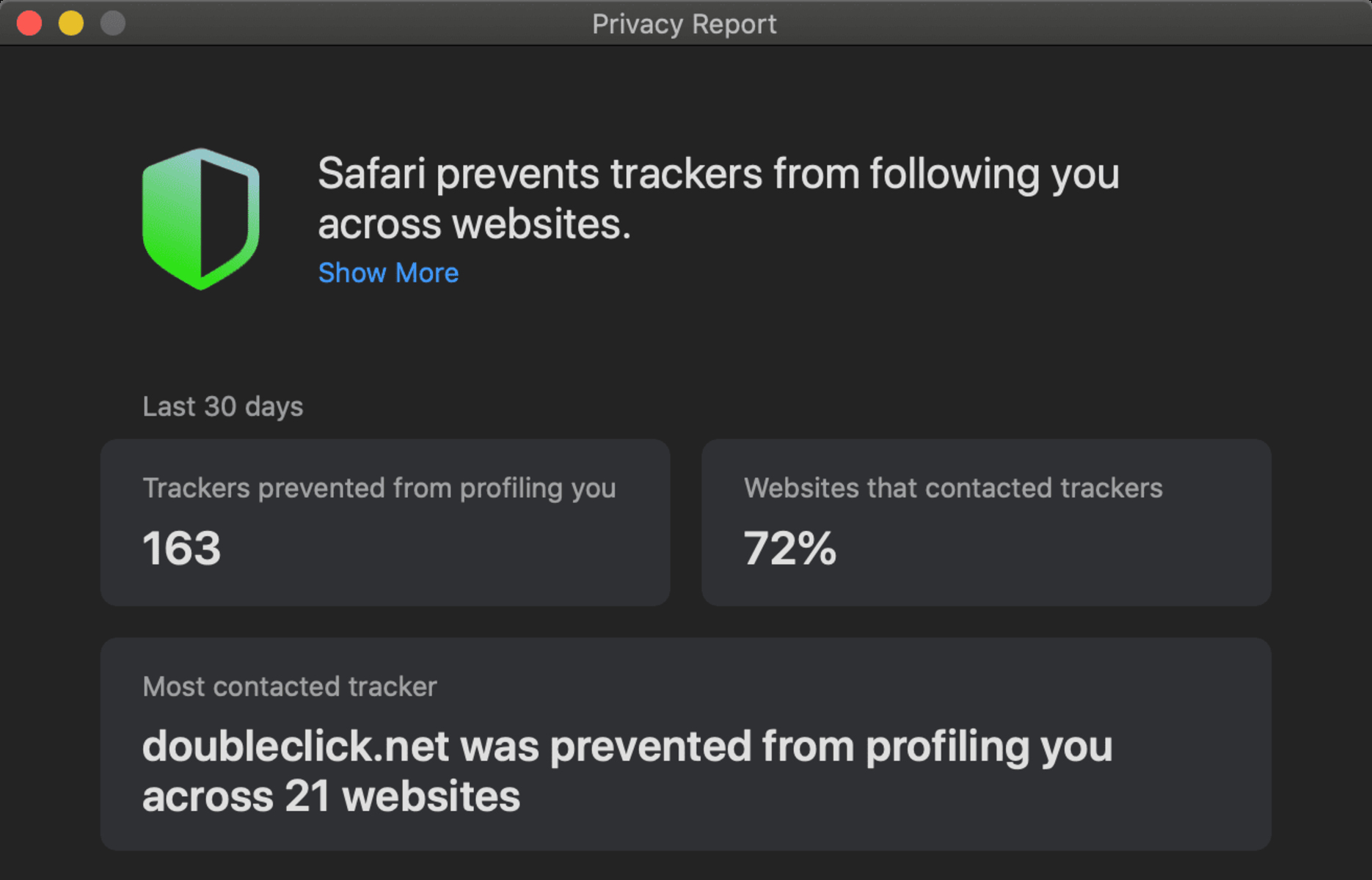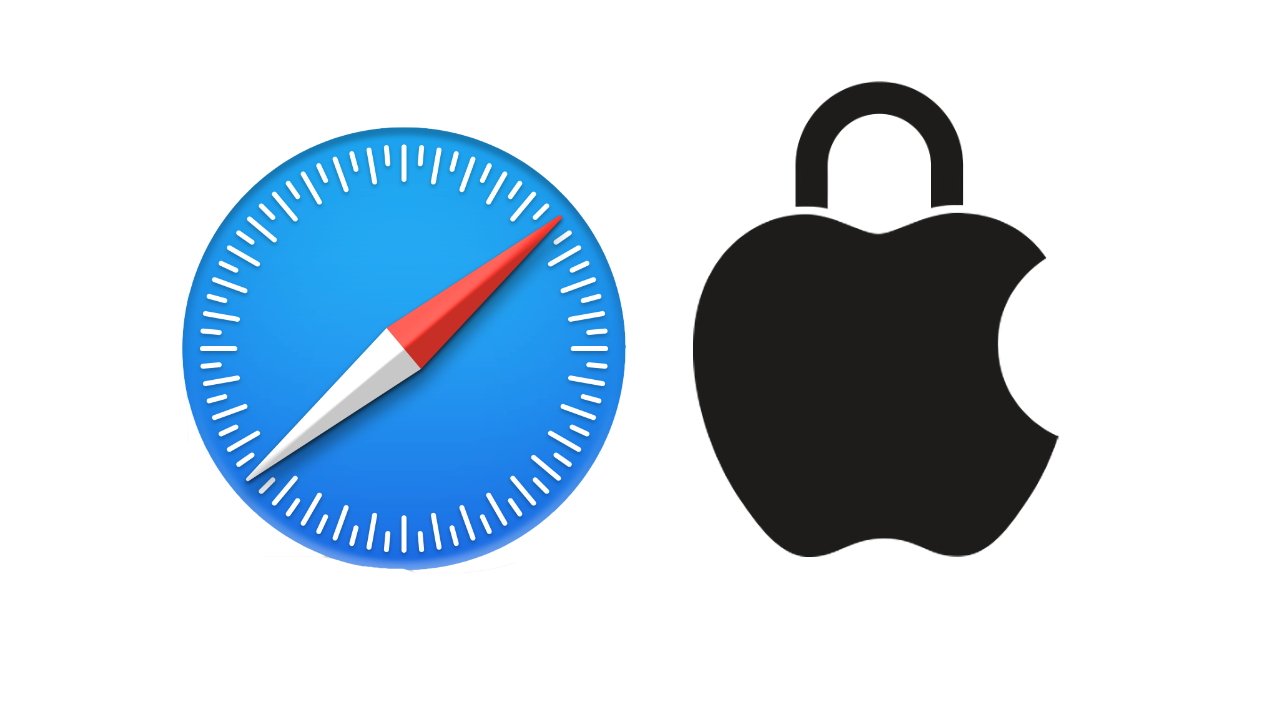Introduction
When you browse the internet, you leave behind digital footprints that can be tracked by various entities. These digital footprints, often in the form of cookies and other tracking technologies, provide valuable insights into your online behavior. This practice, known as tracking, has become ubiquitous on the web, raising concerns about privacy and data security.
In this article, we will delve into the world of online tracking, focusing specifically on how it operates within the Safari browser. By understanding the intricacies of trackers and their impact on your online experience, you can make informed decisions about managing your digital footprint and safeguarding your privacy.
As we embark on this exploration, it's important to recognize that the digital landscape is constantly evolving, with new tracking methods and technologies emerging regularly. By shedding light on the fundamentals of tracking and its implications, we aim to empower you with the knowledge needed to navigate the online realm with confidence and awareness. So, let's embark on this journey to unravel the mysteries of trackers and their role in shaping our online interactions.
What is a Tracker?
At its core, a tracker is a piece of code embedded in a website or an online platform to monitor and record user activities. These activities can range from the pages visited and the duration of the visit to specific actions taken, such as clicking on links or making purchases. The primary purpose of trackers is to gather valuable data about user behavior, preferences, and interactions with online content.
Trackers come in various forms, with cookies being one of the most common types. These small text files are stored on a user's device and are utilized to track and store information about their browsing habits. Additionally, there are other tracking technologies, such as pixels and scripts, which serve similar purposes of monitoring and recording user activities.
The data collected by trackers is often used for targeted advertising, personalizing user experiences, and analyzing website performance. By tracking user behavior, businesses and website operators can gain insights into consumer preferences, optimize their marketing strategies, and tailor content to better engage their audience.
It's important to note that while some tracking is conducted for legitimate and beneficial purposes, such as improving user experience and providing personalized content, there are also concerns about the potential misuse of tracking data. This includes issues related to user privacy, data security, and the unauthorized sharing of personal information.
In the context of Safari and other web browsers, the presence of trackers raises important considerations for users regarding their online privacy and the extent to which their activities are monitored and recorded. Understanding the nature of trackers and their implications is crucial for making informed decisions about managing one's digital footprint and protecting sensitive information.
In the next sections, we will explore the different types of trackers, how they operate within the Safari browser, and strategies for managing and controlling their impact on your online experience. By gaining a comprehensive understanding of trackers, you can navigate the digital landscape with greater awareness and confidence, empowering yourself to make informed choices about your online interactions.
Types of Trackers
Trackers come in various forms, each serving specific purposes in monitoring and recording user activities. Understanding the different types of trackers is essential for comprehending the diverse methods employed to gather data about online behavior. Here are the primary types of trackers commonly encountered in the digital realm:
-
Cookies: These are small text files stored on a user's device by websites they visit. Cookies serve multiple functions, including remembering user preferences, enabling personalized content, and tracking user interactions. There are two main types of cookies: session cookies, which are temporary and expire when the browser is closed, and persistent cookies, which remain on the device for a specified duration.
-
Pixels: Also known as web beacons, pixels are tiny, invisible images embedded in web pages or emails. When a user accesses a page or opens an email containing a pixel, it can transmit information back to the server, providing insights into user engagement and behavior. Pixels are commonly used for tracking website visits, measuring ad performance, and monitoring user interactions with online content.
-
Scripts: These are snippets of code embedded within web pages to perform various functions, including tracking user activities. Scripts can capture a wide range of data, such as mouse movements, clicks, and form submissions. They are utilized to gather detailed insights into user behavior and interactions with web content, enabling website operators to optimize their platforms and tailor experiences to user preferences.
-
Fingerprinting: This method involves collecting information about a user's device and browser configuration to create a unique identifier, or "fingerprint." Unlike traditional tracking technologies, fingerprinting does not rely on storing data on the user's device, making it more challenging to control or block. Fingerprinting is often used for targeted advertising and user profiling, raising concerns about user privacy and data security.
By recognizing the diverse forms of trackers and their functionalities, users can gain a deeper understanding of how their online activities are monitored and recorded. This awareness is crucial for making informed decisions about managing tracking technologies and safeguarding personal privacy while navigating the digital landscape.
How Trackers Work on Safari
In the context of the Safari browser, trackers operate by leveraging various technologies to monitor and record user activities during web browsing sessions. Safari, known for its strong stance on user privacy and security, employs several mechanisms to mitigate the impact of trackers and enhance user control over their online experiences.
Safari's Intelligent Tracking Prevention (ITP) is a key feature designed to limit the capabilities of trackers and protect user privacy. ITP utilizes machine learning algorithms to identify and block cross-site tracking, where third-party trackers gather data across multiple websites. By restricting the ability of trackers to create user profiles and track behavior across different sites, Safari enhances user privacy and reduces the risk of unauthorized data collection.
Additionally, Safari incorporates measures to manage cookies, a common form of tracking technology. The browser provides options for users to block all cookies, allow them only for the websites they visit, or enable cross-site tracking prevention. These controls empower users to customize their cookie settings based on their privacy preferences, thereby influencing the extent to which trackers can monitor their online activities.
Furthermore, Safari's implementation of the Storage Access API introduces granular controls over website access to user data, including cookies and other website data. This feature enhances transparency and user consent by requiring explicit permission for websites to access user data, thereby reducing the potential for intrusive tracking practices.
Safari's approach to tracking extends beyond technical features, encompassing a commitment to privacy by design. The browser's emphasis on minimizing data collection and prioritizing user consent aligns with evolving privacy regulations and user expectations regarding online tracking practices.
By understanding how trackers operate within the Safari browser, users can make informed decisions about managing their digital footprint and protecting their privacy. Safari's proactive measures to mitigate the impact of trackers and empower users with granular controls contribute to a more privacy-centric browsing experience, fostering trust and confidence among its user base.
In summary, Safari's approach to tracking reflects a dedication to user privacy and data security, setting a precedent for privacy-focused browsing experiences. By leveraging innovative technologies and user-centric design principles, Safari continues to evolve as a trailblazer in the realm of online privacy and tracking management.
Why Trackers Are Used
Trackers are employed for a myriad of purposes, each serving the interests of website operators, advertisers, and data analysts. Understanding the motivations behind the use of trackers sheds light on the multifaceted roles they play in the digital ecosystem.
-
Personalized User Experience: Trackers enable websites to deliver personalized content and tailored experiences to users. By gathering data on user preferences, browsing habits, and interactions with online content, trackers facilitate the customization of website features, recommendations, and targeted promotions. This personalized approach aims to enhance user engagement and satisfaction, ultimately fostering a more immersive and relevant online experience.
-
Targeted Advertising: One of the primary functions of trackers is to support targeted advertising efforts. By tracking user behavior and interests, advertisers can deliver relevant and personalized ads to specific audiences. This targeted approach aims to optimize ad relevance, improve conversion rates, and maximize the effectiveness of advertising campaigns. From the perspective of advertisers and marketers, trackers serve as valuable tools for reaching and engaging potential customers with tailored messaging and offerings.
-
Analytics and Performance Optimization: Trackers play a pivotal role in gathering data for website analytics and performance optimization. By monitoring user interactions, traffic patterns, and engagement metrics, trackers provide valuable insights into website performance, user behavior, and content effectiveness. This data-driven approach enables website operators to make informed decisions about content strategy, user interface enhancements, and overall platform optimization, ultimately improving the user experience and maximizing the impact of online content.
-
User Behavior Analysis: Trackers are utilized to analyze and understand user behavior across websites and digital platforms. By tracking user journeys, preferences, and interactions, trackers contribute to the creation of user profiles and behavioral insights. This data is leveraged to gain a deeper understanding of consumer preferences, market trends, and user engagement patterns, informing strategic decision-making and content curation efforts.
-
E-commerce and Conversion Tracking: In the realm of e-commerce, trackers are instrumental in monitoring user interactions and tracking conversion events. From product views and shopping cart activity to completed purchases, trackers provide valuable data for e-commerce platforms to optimize the shopping experience, retarget potential customers, and measure the effectiveness of marketing initiatives. This data-driven approach supports the continuous refinement of e-commerce strategies and the enhancement of the online shopping journey for consumers.
In essence, trackers are used to gather valuable data that fuels personalized experiences, targeted advertising, performance optimization, user behavior analysis, and e-commerce refinement. While these purposes serve the interests of businesses and marketers, the implications of tracking on user privacy and data security underscore the importance of informed tracking management and user empowerment in the digital landscape.
How to Manage Trackers on Safari
Managing trackers on Safari involves leveraging the browser's built-in features and settings to exert control over the tracking technologies that impact your online activities. By proactively managing trackers, users can enhance their privacy, mitigate the impact of unwanted tracking, and customize their browsing experience according to their preferences.
Utilize Intelligent Tracking Prevention (ITP)
Safari's Intelligent Tracking Prevention (ITP) is a powerful tool for managing trackers and safeguarding user privacy. This feature utilizes machine learning algorithms to identify and block cross-site tracking, limiting the ability of third-party trackers to monitor user behavior across different websites. By enabling ITP, users can reduce the scope of tracking activities and enhance their online privacy.
Customize Cookie Settings
Safari provides granular controls over cookie management, allowing users to customize their cookie settings based on their privacy preferences. By accessing the browser's preferences, users can choose to block all cookies, allow them only for the websites they visit, or enable cross-site tracking prevention. These options empower users to tailor their cookie settings according to their privacy and tracking management needs.
Manage Website Data
Safari's "Manage Website Data" feature enables users to view and control the data stored by websites, including cookies and other tracking technologies. By accessing this feature, users can review the specific trackers and website data stored on their devices, providing transparency and control over the information collected during their browsing sessions.
Enable Private Browsing
Safari's Private Browsing mode offers an additional layer of privacy by preventing the storage of browsing history, cookies, and other tracking data. When browsing in Private mode, Safari does not retain information about the websites visited, offering a more discreet and privacy-enhanced browsing experience.
Consider Content Blockers and Extensions
Safari supports the use of content blockers and extensions designed to enhance privacy and security by blocking trackers, ads, and unwanted content. By exploring the available content blocking options in Safari's settings or the App Store, users can discover and install extensions that align with their tracking management and privacy preferences.
By leveraging these features and settings, users can actively manage trackers on Safari, exerting control over their digital footprint and enhancing their online privacy. Safari's proactive approach to tracking management empowers users to make informed decisions about their browsing experience, aligning with the browser's commitment to user privacy and data security.
Conclusion
In conclusion, the realm of online tracking within the Safari browser encompasses a dynamic landscape of technologies, privacy considerations, and user empowerment. By unraveling the intricacies of trackers and their impact on user privacy, we gain valuable insights into the evolving digital ecosystem and the measures implemented to safeguard user data.
Safari's proactive approach to tracking management, exemplified through features such as Intelligent Tracking Prevention (ITP) and granular cookie controls, underscores the browser's commitment to prioritizing user privacy and data security. These built-in mechanisms empower users to exert control over their digital footprint, enabling informed decisions about tracking management and privacy preferences.
As users navigate the digital realm, the multifaceted roles of trackers in delivering personalized experiences, supporting targeted advertising, and optimizing website performance underscore the significance of tracking technologies in shaping the online landscape. However, the implications of tracking on user privacy and data security necessitate a balanced approach that prioritizes user empowerment and transparency.
By leveraging Safari's features and settings, users can actively manage trackers, customize their browsing experience, and enhance their online privacy. The browser's emphasis on user consent, transparency, and privacy by design sets a precedent for privacy-focused browsing experiences, fostering trust and confidence among its user base.
In essence, the journey through the intricacies of online tracking within Safari illuminates the pivotal role of user empowerment, transparency, and privacy-centric design in shaping the digital landscape. By understanding the nature of trackers, their functionalities, and the mechanisms for managing them, users can navigate the online realm with greater awareness and confidence, ensuring that their digital footprint aligns with their privacy preferences and data security considerations.
As the digital ecosystem continues to evolve, Safari's commitment to user privacy and tracking management serves as a testament to the ongoing efforts to prioritize user empowerment and data protection. By embracing a user-centric approach to tracking and privacy, Safari paves the way for a more privacy-enhanced and personalized browsing experience, aligning with the evolving expectations and rights of users in the digital age.









